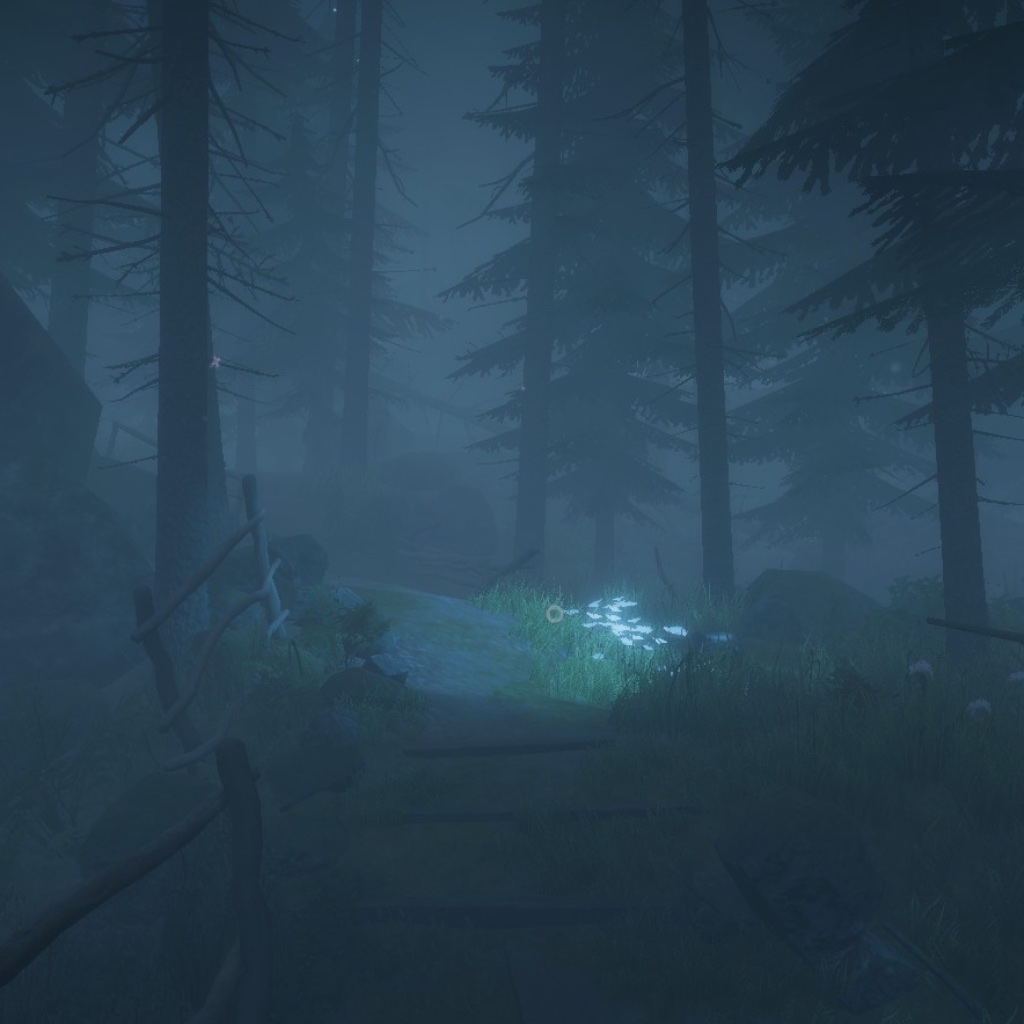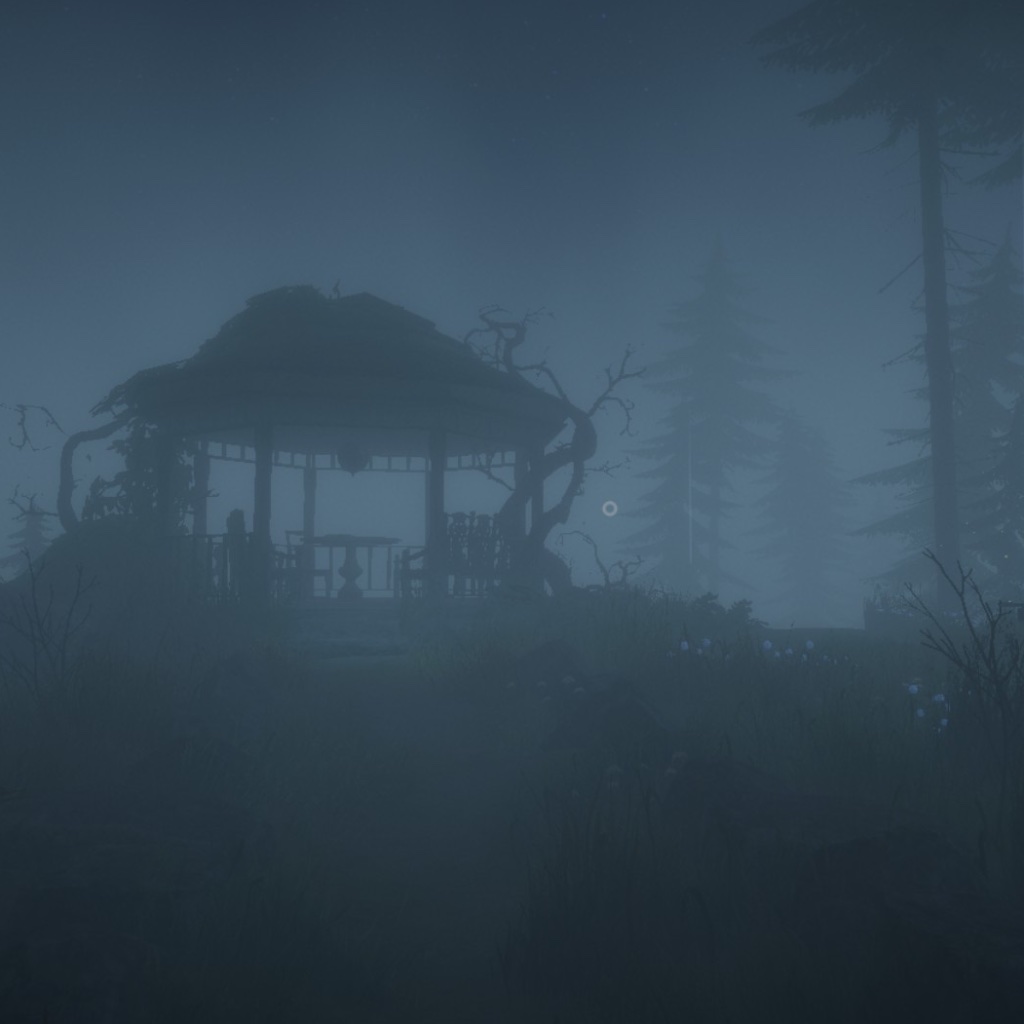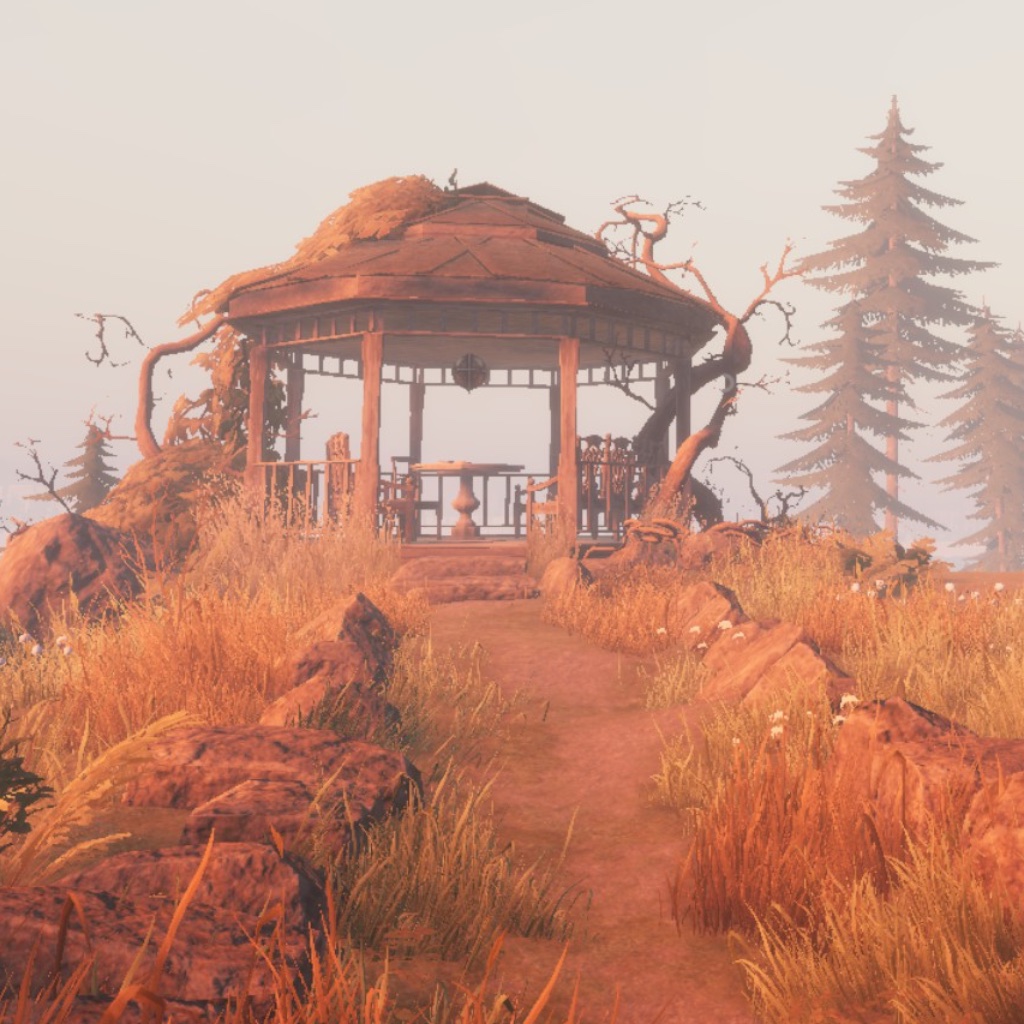Lake Ridden is a walking puzzle game that’s a fairy–tale aimed at younger teenage girls. I am not in the target audience! Even so, I found it a perfectly fine game, a good day’s entertainment.
You are a thirteen year old girl. With your sister, you go camping one night in the American outback. You wake up. Your sister has vanished. You have to find her.

You face a number of challenges: exploring the dark, nighttime forest, then an abandoned mansion and its estate. You meet magical beings, and they help or hinder your task, depending mostly on the plot. The game feels like a classic youngster’s fairy tale, and seems to fit well in the tradition of girl’s literature, as understood by a fat old man who has no daughters, who’s depending on half–memories of his sister’s childhood tales.
The plot is simplistic, and the puzzles are not a major challenge, but then I am a fat old man who has no daughters. I suspect it’s well–balanced. I do regret the dialogue is a bit too slowly paced, it seems targeted at even younger children.
The music is beautiful, solo instruments and quartets, and makes the whole journey safe and comfortable. Nothing creates fear, only surprise and delight. This is a great game to play when you’re feeling ill and need the computer to give you an emotional cuddle!
The graphics are wonderful. The game makes great use of weather effects, and natural, twenty–four hour lighting. The countryside feels real and complex, the kind of thing it should be. The play space is not small, yet almost everything feel unique to its place in the story. The only repetition lies in the objects used to decorate some places: there are a few too many identical tins, which, to be fair, is a common problem across all games. There appears to have been a lot of effort put into where you are and what you see. This is no Hanna–Barbara cartoon!
The puzzles are well–distributed, fresh, and all different. Well, the last bit isn’t quite true: the plot involves a schemer who makes locks and puzzle boxes, so unsurprisingly those follow a set design. But the puzzles used to move along the game are each unique and different, and I appreciate that. They’re also fairly simple, given the target audience, but enough of a challenge to make their solution something of an achievement for everyone.
I will probably go back into the game at some point, and explore the many secondary puzzles and locations not essential to complete the game, but which add value and make it something worth revisiting.
Ultimately, I think I’m happy to recommend this game as a good day’s diversion.



